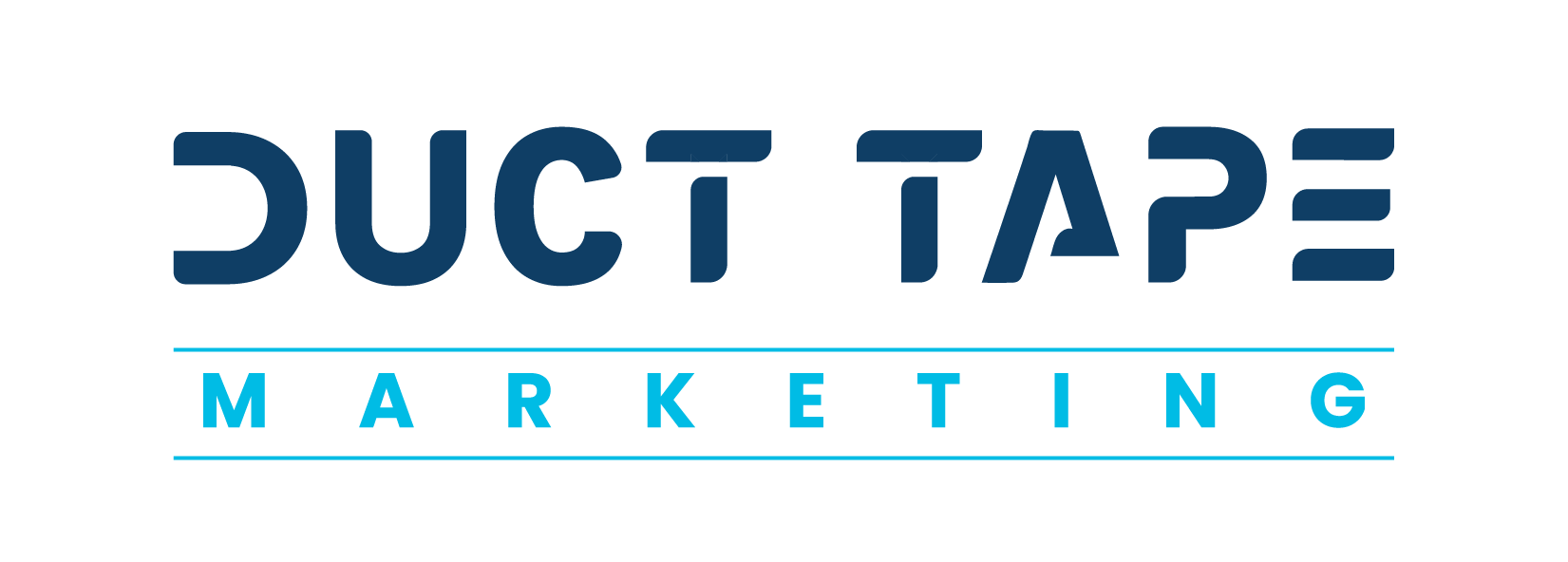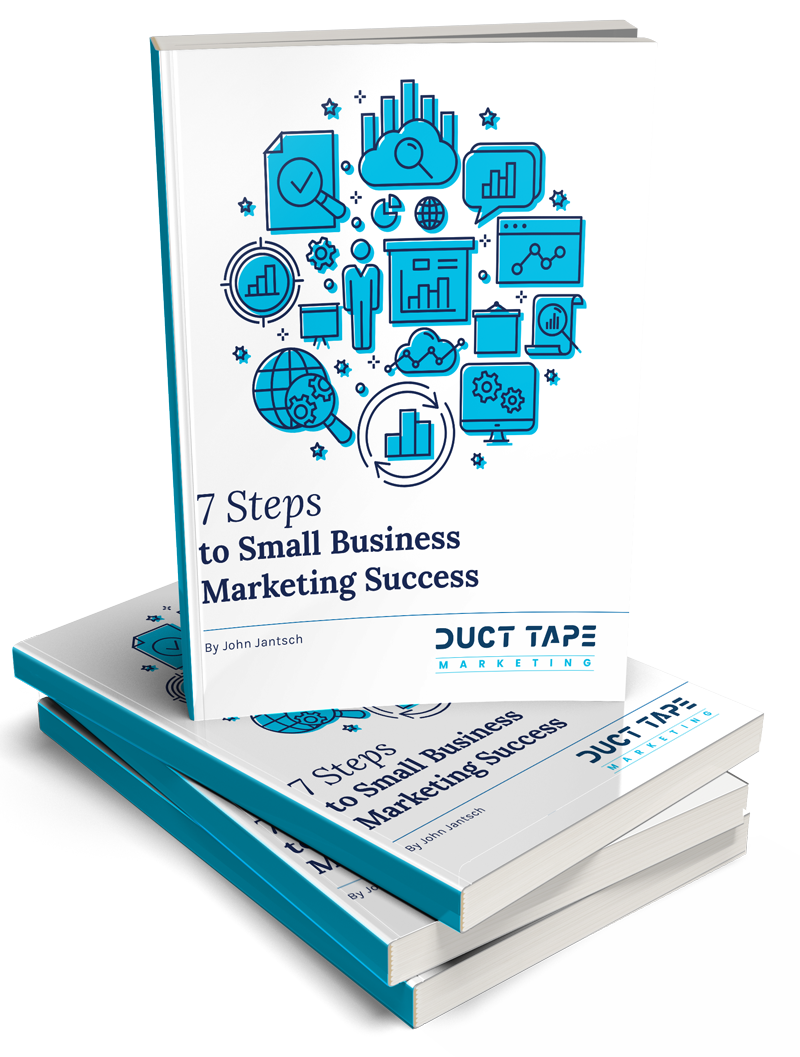Landing pages are a must for your website. Whether you create an online product ad, have an event coming up, want to tell people about your latest book, or otherwise have a special offer to promote, landing pages need to be part of your marketing.
Rather than directing your audience to your homepage and asking them to dig around for the content they want, landing pages help direct viewers to the messaging that’s most relevant to them. If they clicked on an ad touting your same-day service, you can direct them to a landing page that features your online booking system. If you created a Facebook post about your upcoming conference, you should link out to your landing page featuring information about speakers and schedule, and with a call to action to purchase tickets.
Landing pages are a critical part of the sales process to support any ad or attempt to drive traffic. And all great landing pages share these five features.
1. A Promise To Solve a Problem
Viewers click on your search ad or social media post because something in the copy resonates with them. They saw that you understand the problem they’re looking to solve, and they want to learn more. The landing page that you drive them to needs to open with a promise to solve that problem.
A great landing page has a main headline, a supporting sub-headline, and a proof statement. Let’s take a look at this landing page for Social Media Examiner’s Social Media Marketing World Conference.
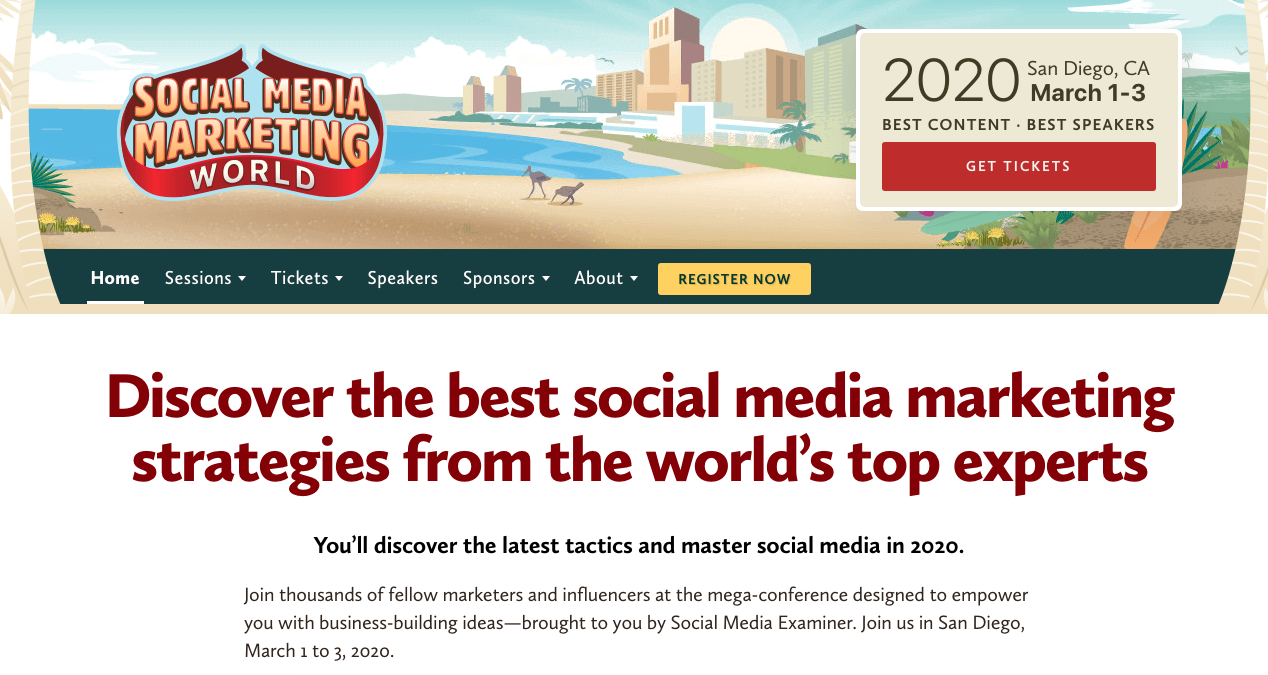
Anyone who runs social media for a business knows that the landscape is constantly shifting. Best practices change on a dime. Staying on top of the latest trends is critical if you want to get noticed, and that’s the very problem that the Social Media Marketing World Conference is solving.
They start with the headline: “Discover the best social media marketing strategies from the world’s top experts.” This tells readers that by attending, they’ll have access to high-caliber guests and will be getting top-notch advice to help with their social efforts.
The sub-head states, “You’ll discover the latest tactics and master social media in 2020.” This builds confidence that the people speaking at the conference are on the cutting edge—if you attend, you won’t be hearing about things that worked in the past. Instead, you’ll have access to the hottest knowledge that will vault you ahead of your competition this year.
Next up is their proof statement: “Join thousands of fellow marketers and influencers at the mega-conference designed to empower you with business-building ideas.” This is a conference that’s been around for years and is trusted by tons of other industry professionals. They keep coming back year after year because the conference delivers for them, so what’s stopping you from signing up?
Unsurprisingly, the folks running this marketing conference have a great handle on how to create a strong landing page. But no matter what field you’re in, you can do the same for your business by focusing on those three key elements: headline, sub-head, proof statement.
2. The Hero Element
Once you’ve captured people’s attention with a header that promises to solve their problem, you want to draw them in further. That’s where the hero element comes in. This is typically a visual component—either still image or video—that provides context for your audience. It helps them understand how your service or product will change their lives for the better.
The hero metaphor is two-fold. You want to establish yourself as their hero, someone who’s capable of coming in and solving their problem. But sometimes the hero image is actually of them; it’s a look at how, once their problem is solved, they can go on to do bigger and better things for themselves and those around them.
Check out this hero image for TruGreen’s landing page for their lawn pest protection services.
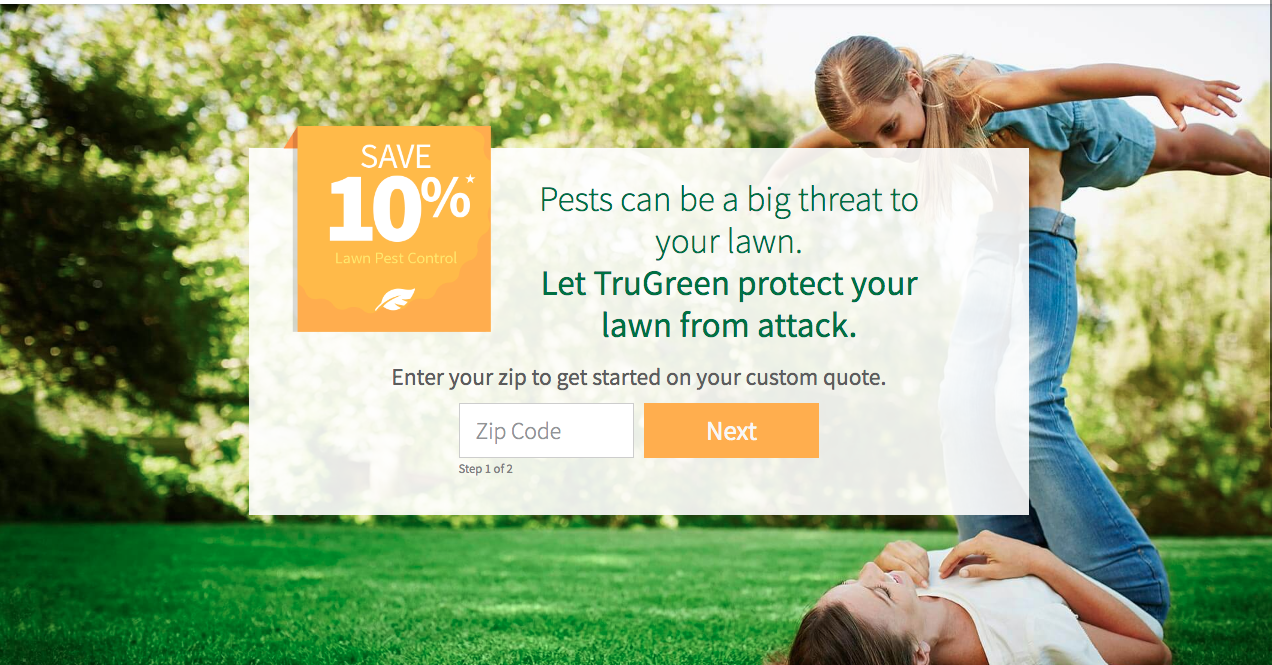
The image shows a mom and daughter playing on their lush, healthy lawn. And while TruGreen isn’t literally in the picture, the beautiful grass represents their hard work. They strove to keep pests at bay and made this backyard a place for quality family time. This mom isn’t stuck wasting time trying to fix her lawn herself. Instead, TruGreen has taken care of that for her, and she’s able to enjoy being a parent.
3. List of Benefits
By now, you’ve drawn your audience in with a bold opening statement and compelling visual. Next up, you want to provide a specific summary of the benefits they’ll get from taking advantage of your headline offer. This is your opportunity to list benefits and features in detail.
Take this example from Rite Plumbing and Heating, which is the landing page you come to after searching “same day plumber near me” on Google.
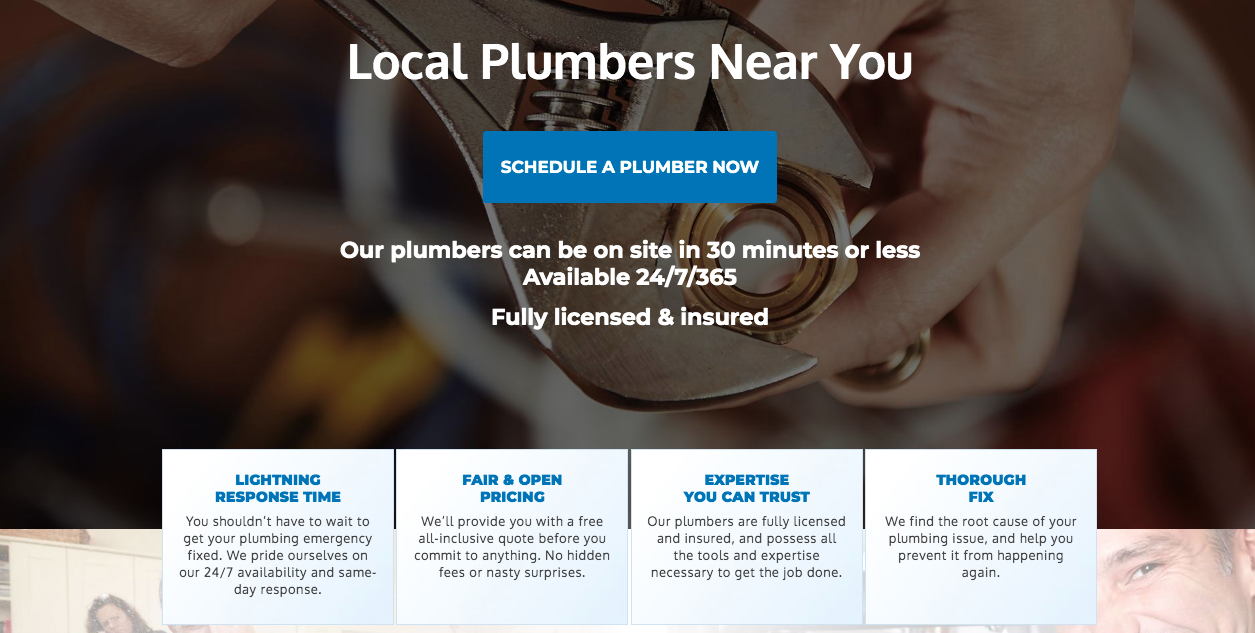
Their list of benefits goes into detail and addresses many of the concerns a prospect might have. Their plumbers are available immediately and around the clock. You know what you’ll pay before you book, so you don’t have to worry about surprise charges on your final bill. Their team is licensed and insured, so you can rest easy letting them into your home. And they’re not looking for the quick and easy solution. Instead, they search for the underlying cause and fix that so you don’t need an emergency plumber again in a few weeks’ time!
By providing this level of detail up front, you eliminate any hesitation a prospect might have. And by keeping all of this information on the same landing page, you prevent your audience from having to dig through your website for a separate FAQ page. You’ve given them all of the information they need right here, right now to make their decision.
4. Social Proof
Even with all of that information from you, sometimes prospects want one final layer of reassurance. Of course you think your business is great, but do your existing customers agree?
You could leave your prospect to search for you on Yelp or Google My Business, but that invites them to leave your landing page and opens up the possibility that they might discover one of your competitors and drift over to them. Instead, provide social proof directly on your landing page to keep your audience right where you want them.
Take a look at what I’ve done on the landing page for my latest book, The Self-Reliant Entrepreneur.
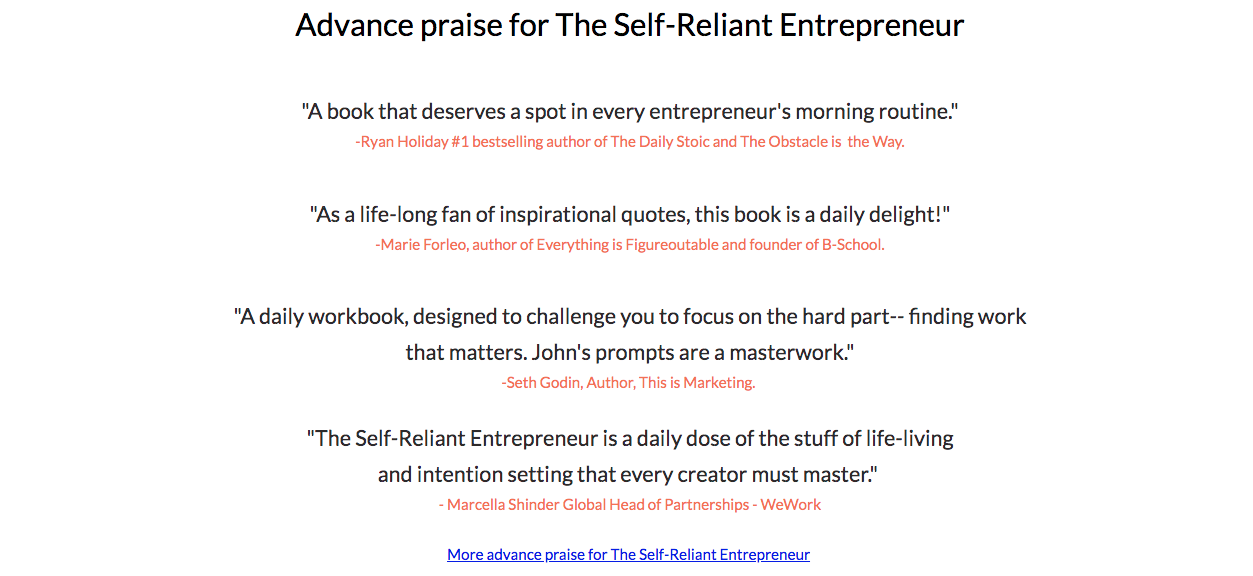
I’ve collected quotes from other well-respected and recognizable authors and thought leaders who had nice things to say about my book. For someone who may be on the fence about purchasing the book, these quotes give them a greater sense of what the work is about and provide external proof of its value. It’s no longer just me saying nice things about my own book; others who are in-the-know think it’s useful, too.
Social proof on your landing page can come in a number of forms. It can be quotes or testimonials, like in this example. You can also include likes and shares that are linked up with your social media pages. Or you can show starred ratings that come from external local listings sites like Yelp or Google My Business.
Basically, anything that shows that other people have given your product or service a try and have left happy customers is of value in the social proof stage.
5. One Call to Action
You’ve given it all you’ve got. You drew readers in with a killer headline. Then you created an image that shows how great life could be with your product or service. You gave your audience the inside scoop on exactly what they can expect if they make the purchase. And you’ve proven that other people like what you do.
Now it’s time to go in with the call to action. It’s important that you only create one call to action per landing page. Having multiple buttons and forms asking your audience to do different things is very confusing. And it can scare people off from taking your desired action.
Instead, create one button or a basic form. The appropriate call to action will depend on what you’re asking someone to do. If you’re asking them to do something very simple, like ordering a book, a button can suffice. If you’re offering a free quote or to schedule an appointment, a short form might be the right fit.
There you have it! Those are the five elements every small business landing page must have to be successful. For a look at all of the elements coming together on one page, check out this wireframe:
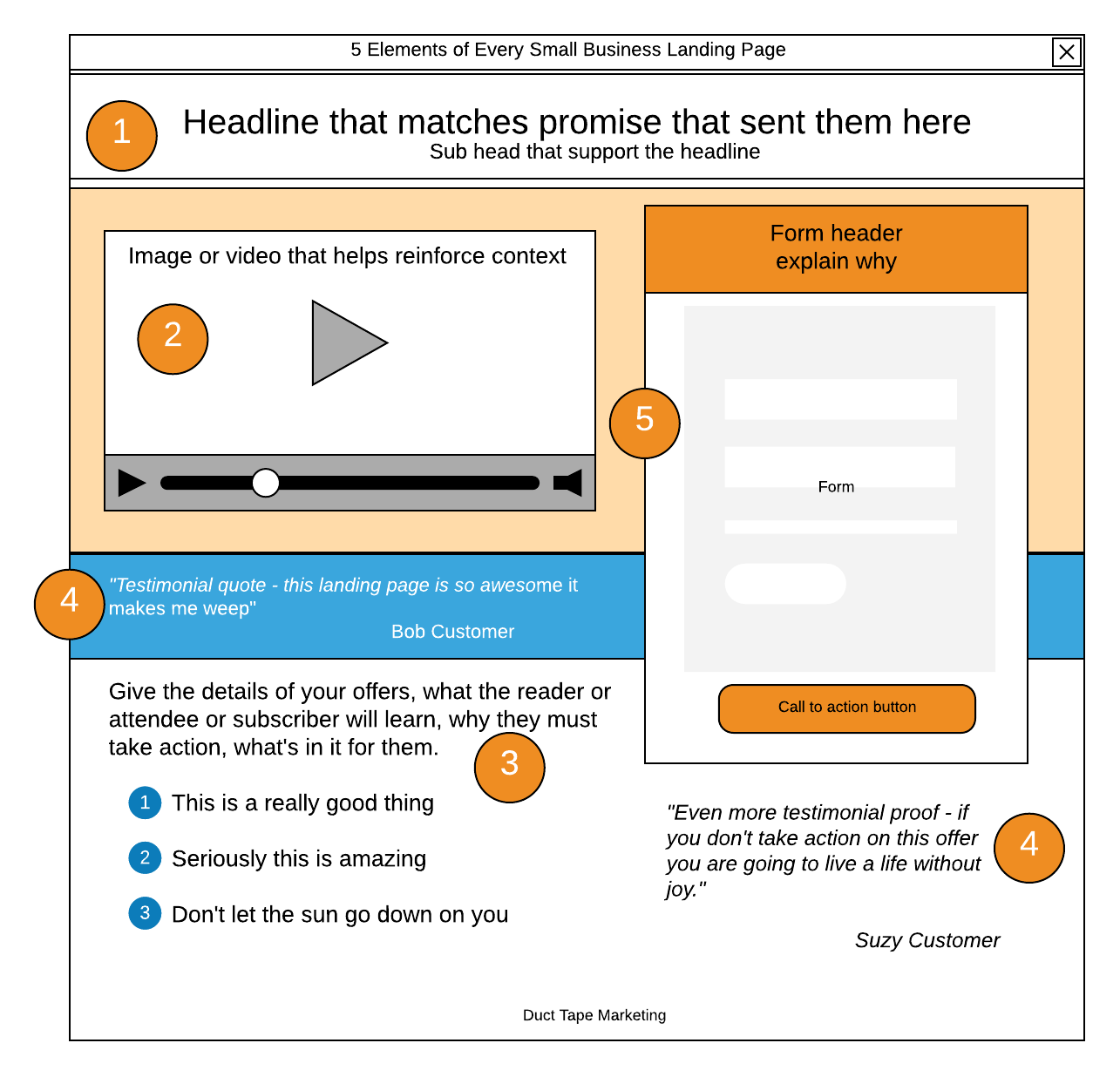
By following this simple formula for creating landing pages, you can ensure that every ad campaign gets the highest conversion rates possible. A clean, clear landing page that addresses any questions or issues a prospect might have is the way to convince readers to take the desired action.
If you liked this post, check out our Small Business Guide to Sales.
